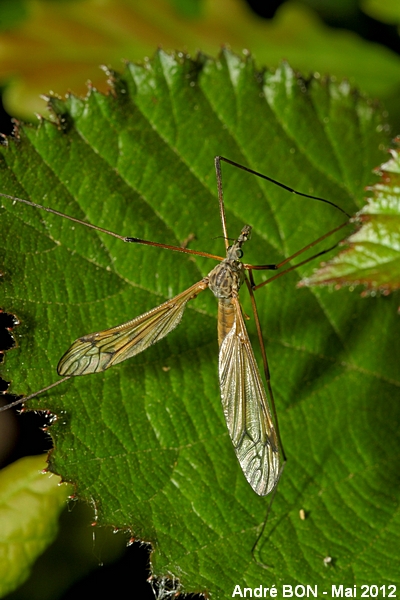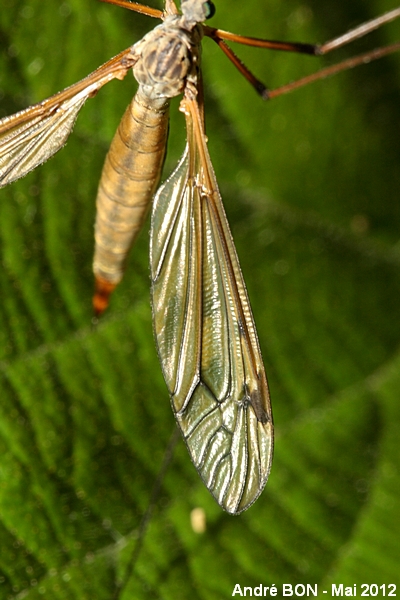

| Tipula varipennis (Meigen, 1818) |


|
|
Scientific name: Tipula varipennis (Meigen, 1818) Common name: Other names: You will also find the scientific name written: Tipula variipennis. French name: Order: Diptera Family: Tipulidae Wingspan : Body size: 14 to 20 mm; Wingspan: about 35 mm.. Biotope: Damp forests and shady places close to water. Geographic area: From Spain to Central Asia. Observation period : March-June. |
Tipulidae, also called Crane Flies, are remarkable by their very long and fragile legs which can easily detach from the body. You can recognize the members of the Tipulidae family by the V-shape suture of the mesonotum, on the upper side of the thorax between the base of the wings, by their long snout and by they wing veins with two anal veins reaching the edge of the wing. The Crane flies of the Tipula genus are characterized by the sub-costal vein joining the radial vein (Tipulinae family), by the presence of a discal cell, by long legs and by thread-like antennae with 13 articles. Tipula varipennis is part of the group of crane flies showing nebulous and irregularly spotted wings (no darker spots along the costal edge nor transverse or longitudinal bands). The mesonotum, on the upper side of the thorax, bears four uniform dark stripes, that's to say not outlined with a darker colour. The R2 vein is interrupted before touching the costal vein. In this group, you can tell Tipula varipennis apart with its completely black antennae except the second article which is yellowish. |
| [To know more about the Tipula varipennis] [Next picture] [Top] |

|
I have observed this crane fly in a clearing. This view is enough (in the non-reduced version) to tell the species apart. All the criteria, including the colour of the antennae, are visible on it. |
| [To know more about the Tipula varipennis] [Previous picture] [Top] |

|
Concerned about gathering the maximum of information, I have also shot one close-up picture of the wing. You can clearly see the R2 vein interrupted before touching the costal vein, just below the stigma. |